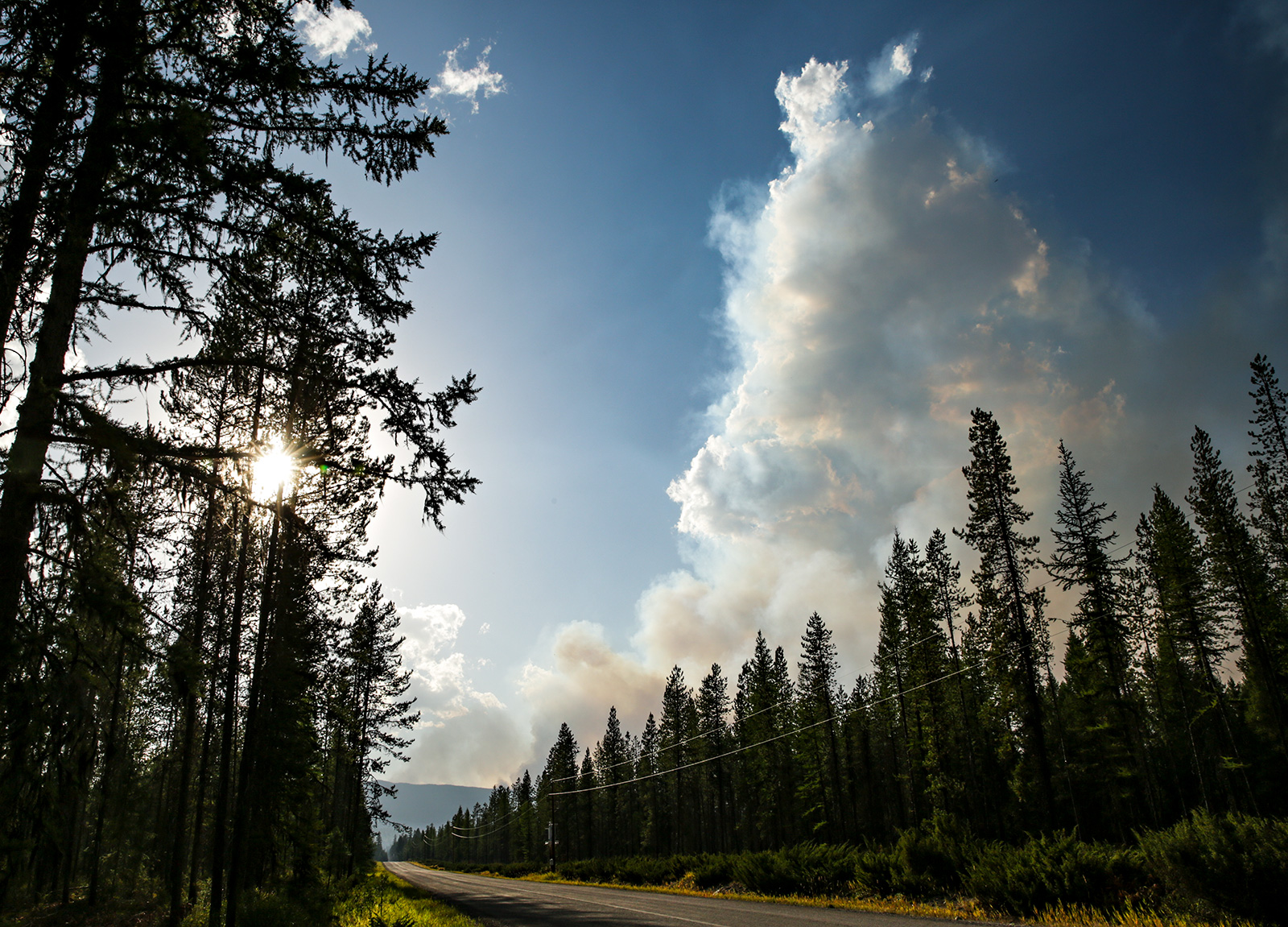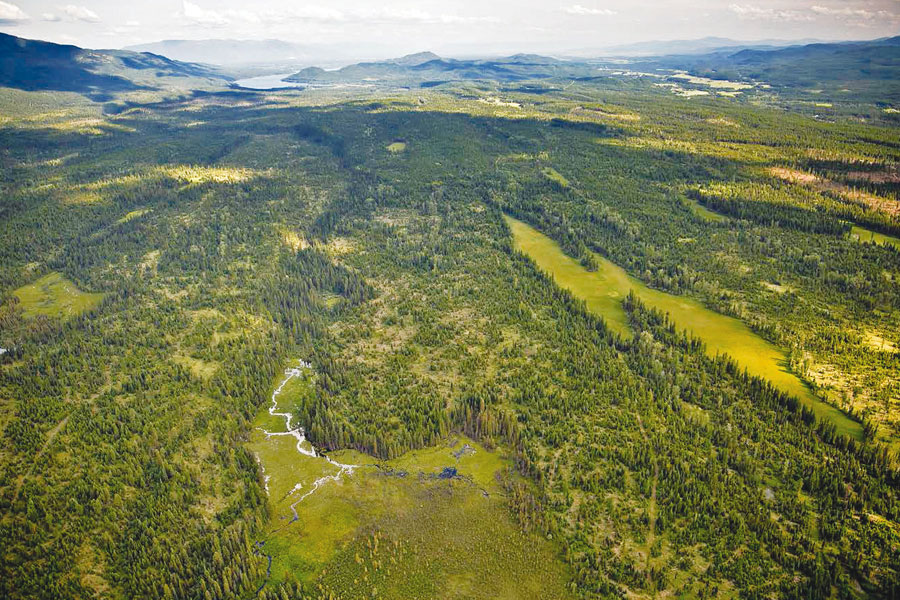Northwest Montana Forest Improvements Underway Near Olney Through ‘Good Neighbor Authority’ Partnership
On the Jackknife Project along Good Creek Road, foresters say the state-federal collaboration employs local loggers to reduce wildfire risk while generating $270,000 in revenue to reinvest in future projects and habitat restoration
By Tristan Scott
The Flathead National Forest and Montana Department of Natural Resources and Conservation (DNRC) say a new partnership is helping to improve the health of a forest spanning state and federal jurisdiction near the northwest Montana community of Olney. Using the congressionally designated Good Neighbor Authority (GNA) program, foresters from both agencies say the project reduces the risk of wildfire, supports local loggers and reinvests the logging revenue in future forest management and wildlife habitat restoration projects.
Dubbed the Jackknife Project, it is located within the wildland urban interface (WUI), approximately one mile west of the community of Olney, adjacent to Stillwater State Forest trust lands and private residential properties. Spanning more than 1,000 acres along Good Creek Road, the Jackknife Project uses shaded fuel breaks and a commercial timber sale to thin forest stands. In doing so, the timber harvest removes material that could allow wildfire to reach treetops, fire behavior referred to as a crown fire, which allows wildfire to spread more rapidly.
“The one unique thing about this specific project is that fire mitigation,” said Joshua Tomlin, a DNRC forester. “This stand looked very different pre-harvest. There was a lot of lodgepole, the crown canopy was a lot tighter, there was a lot of small-diameter trees out here. There was kind of a wall of trees so if a fire got established in there it could take a very large run, fast run and become very hard to suppress.”
The timber sale was purchased by Stoken Logging, a family-owned company from Eureka that’s employing three generations of sustainable forestry management experience on the Jackknife Project. A former professional drag racer, Pat Stoken started the company with his twin brother in 1978. His sons, Cory and Casey, work in the business as well as Casey’s son, Tavien.
Brook Blakely, the DNRC’s GNA program specialist located out of the Northwestern Land Office in Kalispell, said Stoken Logging is unique in that it uses a “cut-to-length” operation that allows for precise navigation and on-site processing that’s a good fit for the logging project near Olney. “Cut-to-length” reduces disturbance to the ground, reduces the material left onsite, and minimizes impact on residual trees. The company will also pile or masticate small trees and surface fuel to further reduce the quantity of material that is available to burn during a wildfire. If a fire occurs in the area, these actions reduce fire intensity and the likelihood a fire will negatively impact adjacent homes and infrastructure.
“These people are locals who have lived in this area for at least four if not five generations,” Blakely said. “So they have a vested interest in wanting to see these forests healthy for the future, not only for the public but they’d also like to be back contracting someday, or their heirs.”
Stoken Logging is harvesting about 800 trees per acre, according to DNRC, leaving approximately 100-250 trees per acre, which decreases the likelihood of crown fire. After harvest, the residual trees will have access to more light, water, and nutrients, Tomlin said, which increases forest health and creates more resilience to insects, disease, and wildfire.
Mike West, fire mitigation and prevention specialist with the Flathead National Forest, said the GNA-facilitated partnership allows the state to administer contracts like Jackknife on national forest parcels, “increasing our capacity to do more management” and identifying projects that are a good fit for both agencies.

“We have to find projects that are going to create revenue, so when the state comes out and says they want to do timber harvests on the national forest, the money that’s recouped from that wood fiber going to the mill can be put into a restoration fund. We can take that funding that’s created from those projects and reinvest it back out on the ground,” he said.
Blakely said the GNA program allows a different approach to forest management “than what’s really ever been done in the state.”
“It allows the state to work with the Forest Service to plan and implement forest restoration projects and a whole host of other resource improvement land management projects on federal land,” he said. “And it allows us to do that cost effectively through really good contracts, with contractors who are familiar with the landscape.”
The project is estimated to produce 2.7 million board feet of lumber for local mills, as well as 7,000 tons of small diameter material, contributing to the sustainable utilization of forest resources and Montana’s forest products industry.
“We have millions of acres of national forest in Montana that need management and are classified with a timber management objective,” Blakely said. “DNRC is able to lend a hand to the Forest Service and provide additional people, resources and financial opportunities through the GNA program to get more work done on the landscape.”
The Jackknife Project ties together approximately 30 miles of fuel breaks spanning state and federal lands. In addition to the forest health and fuel reduction benefits, the timber sale generates an estimated $270,000 in revenue which is reinvested into the GNA program to facilitate future projects, offset costs of noncommercial fuel reduction work, and is used for wildlife and aquatic habitat restoration.
Zack Miller, the raw materials manager for Weyerhaeuser Company, said the GNA partnership has proven effective in navigating the ownership matrix of state, federal and private land while streamlining wood pulp to the mills.
“We need to source logs from the landscape whether that’s privately owned, or federally owned or state owned,” Miller said. “We purchase wood from those landscapes, and GNA steps in to help the Forest Service get projects out and get wood onto the market.”
The collaborative effort is featured in a video produced by the U.S. Forest Service.
For more information on Good Neighbor Authority, visit https://dnrc.mt.gov/Forestry/Forest-Management/good-neighbor-authority.